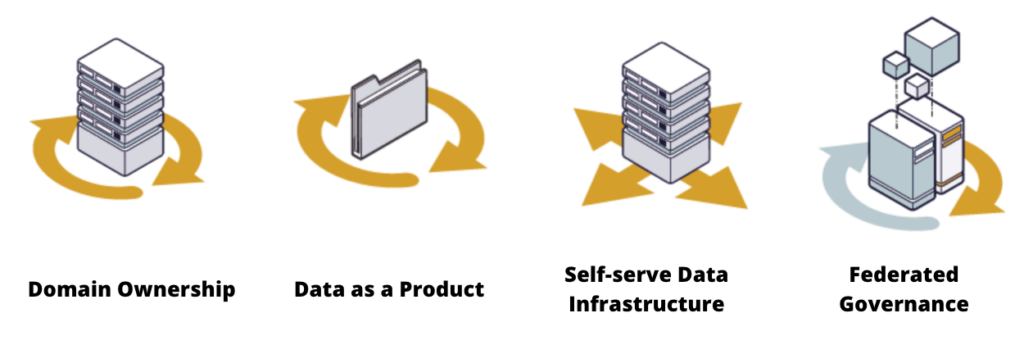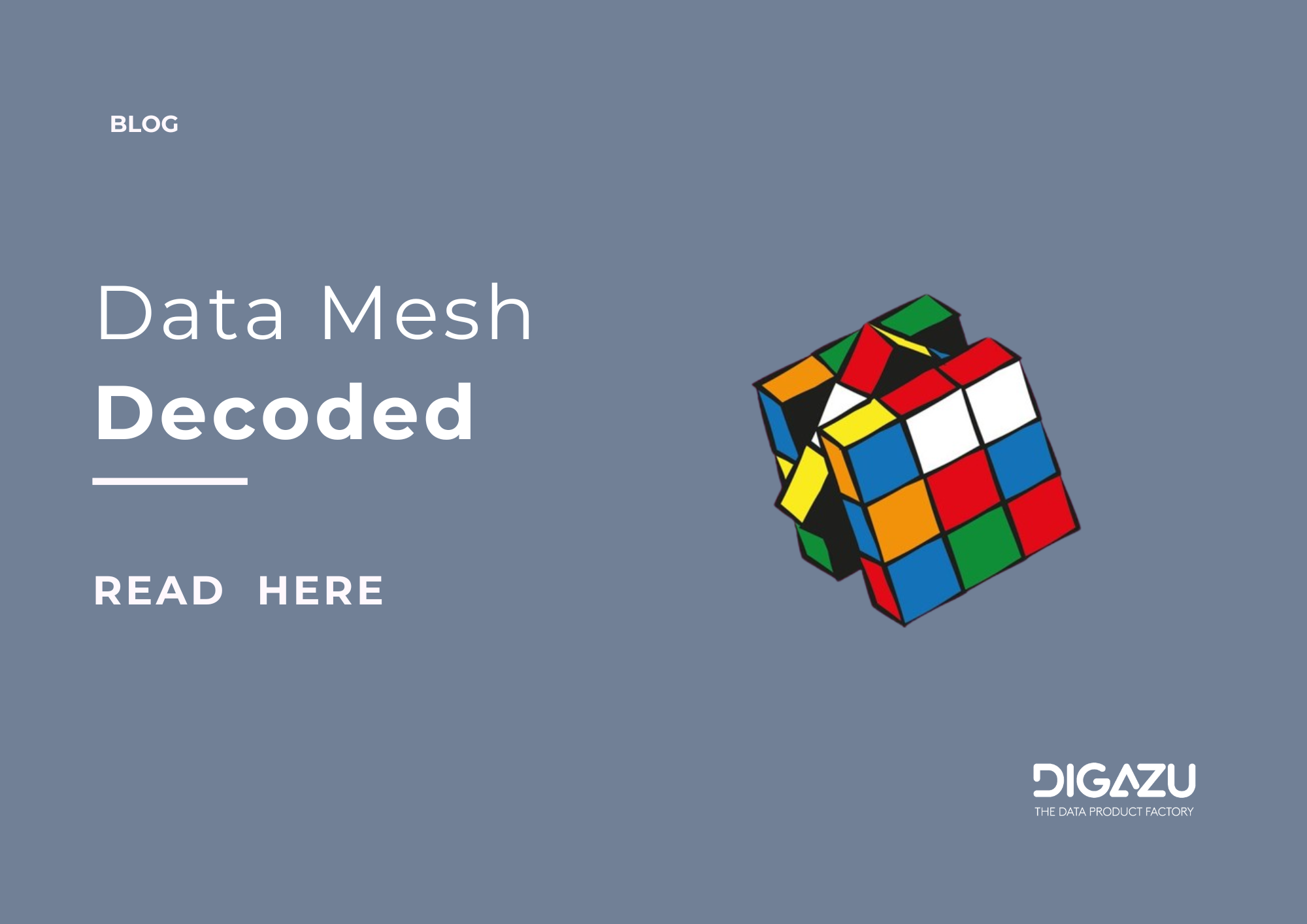In data management, centralised approaches are often challenged by the complexities of modern business requirements. The Data Mesh architecture presents a transformative way for organisations to better manage their data assets. Data Mesh is based on the notion that data is not just a by-product but rather a valuable product in its own right.

A practical definition of Data Mesh is a decentralised data architecture where data is treated as a product and managed by specific data product owners also known as domain owners.
This innovative architecture transfers data ownership responsibilities from a centralised data team to individual business units that generate and use data. The principles at the heart of Data Mesh include domain-driven design, product thinking, and federated governance.
The Data Mesh architecture introduces four core principles:
Domain Ownership – In Data Mesh, each domain is held accountable for managing its own data, placing those with the most contextual intelligence in charge. In fact, domain owners are best suited to understand the nuances of the data they generate and use on a daily basis. This approach guarantees that domain experts take proactive measures to maintain data quality and align data governance with business objectives.
Data as a Product – In this architecture, data is seen from a different perspective. It is no longer just a by-product of business processes but a valuable product on its own. This outlook pushes us to treat data consumers as important customers.
Self-serve Data Infrastructure – Self-service data infrastructure gives teams the ability to independently manage their data end-to-end. This approach not only simplifies data and product lifecycle management but also encourages teams from different departments and domains to work more closely together, breaking down silos and increasing engagement and collaboration
Self-serve data infrastructure puts the power directly into the hands of domain teams, allowing them to take ownership of their data products without heavy reliance on centralised data teams or IT departments. This empowerment fosters a sense of ownership and accountability among domain experts.
Federated Governance – To avoid duplication of efforts, data silos, and lack of interoperability across data domains, federated governance is indispensable.
This model establishes grounds for standardisation through a shared language, including terms, definitions, and policies, while enabling domain owners to maintain a high level of autonomy and control over their data assets. This balance ensures that domain-specific requirements are met without sacrificing organisational coherence and consistency.
Managing data today is not just about organising information anymore, it’s about embracing the value of data and empowering users to own their data, treat it like a valuable product and collaborate across domains. Data Mesh is not just a framework; it’s a paradigm shift in data management. By adopting the above discussed principles, organisations can chart a course towards success in the data-driven era.


